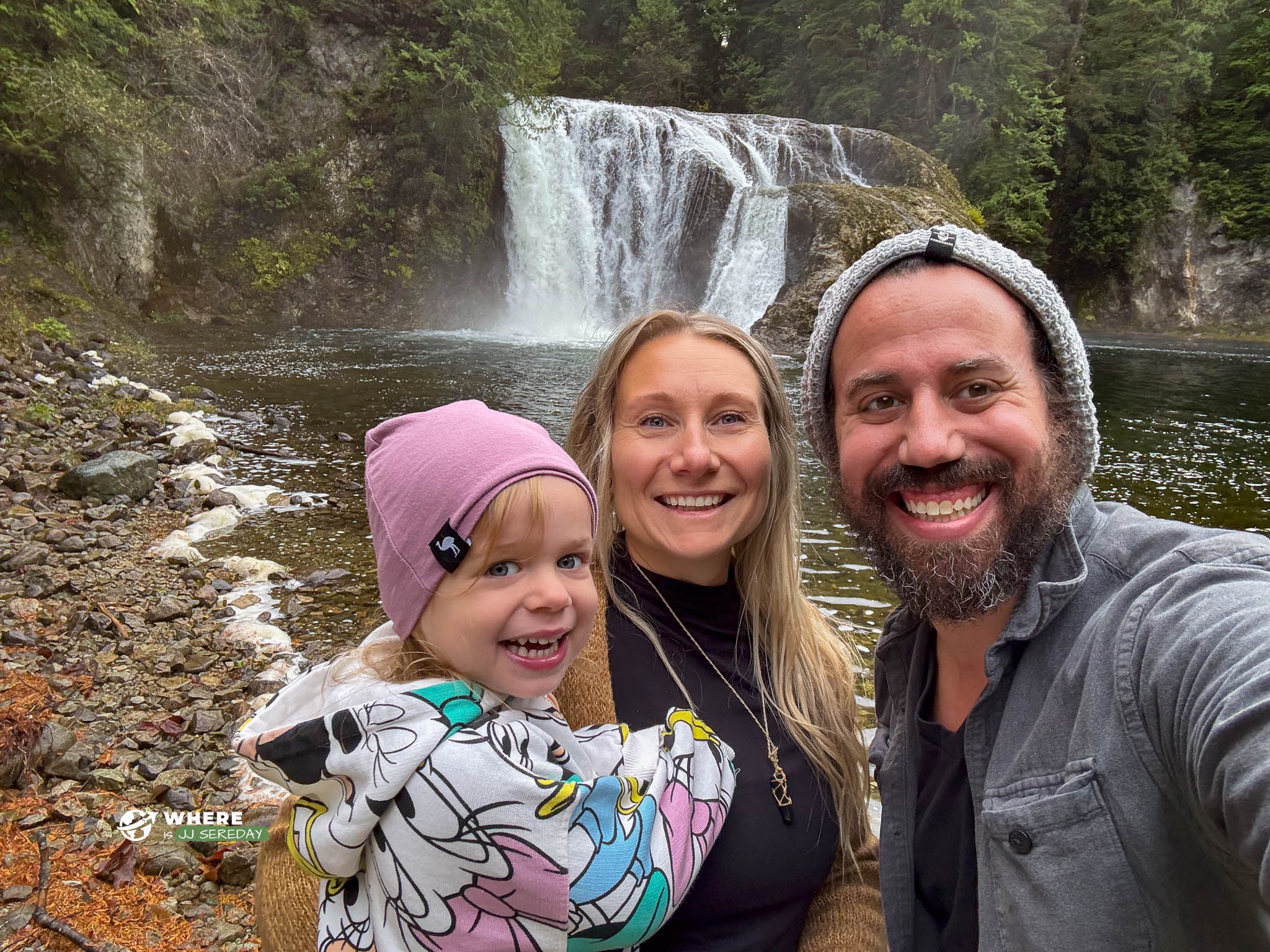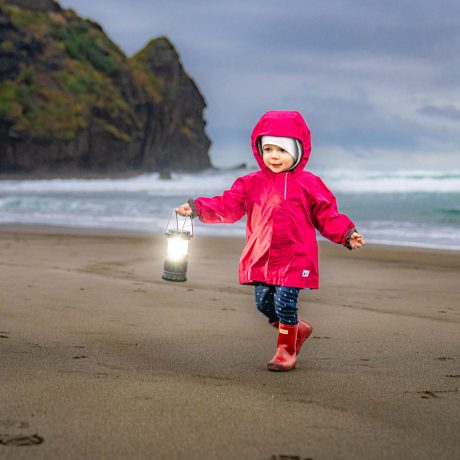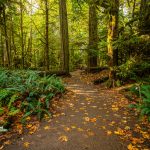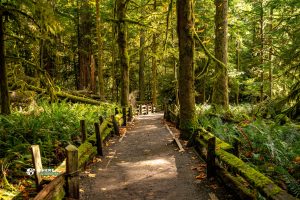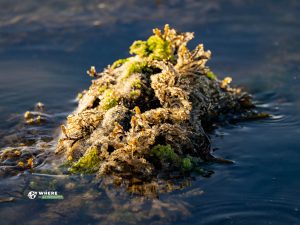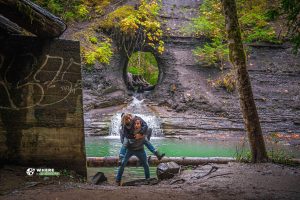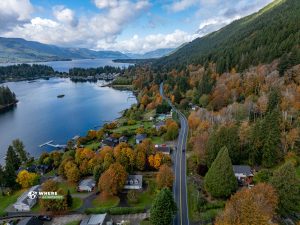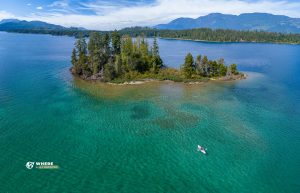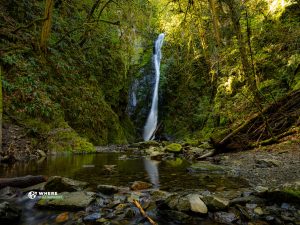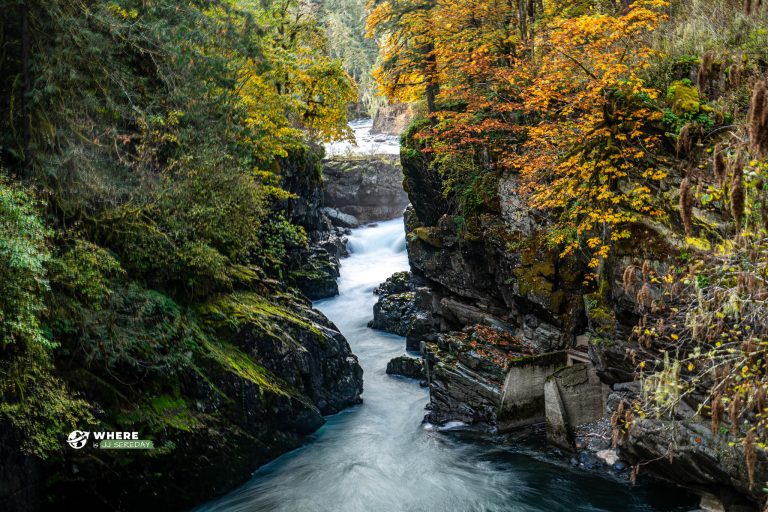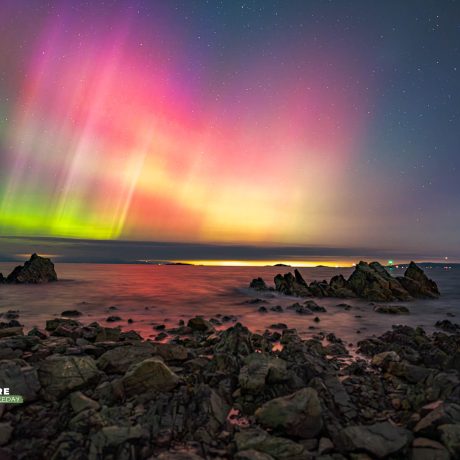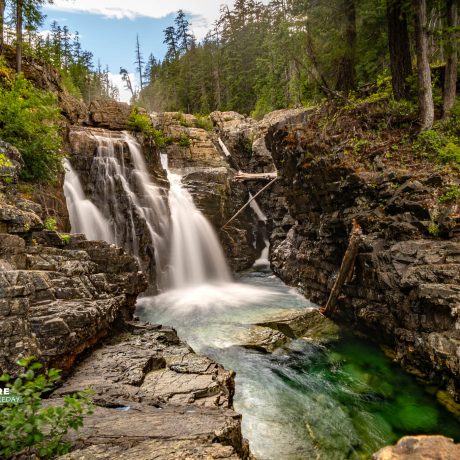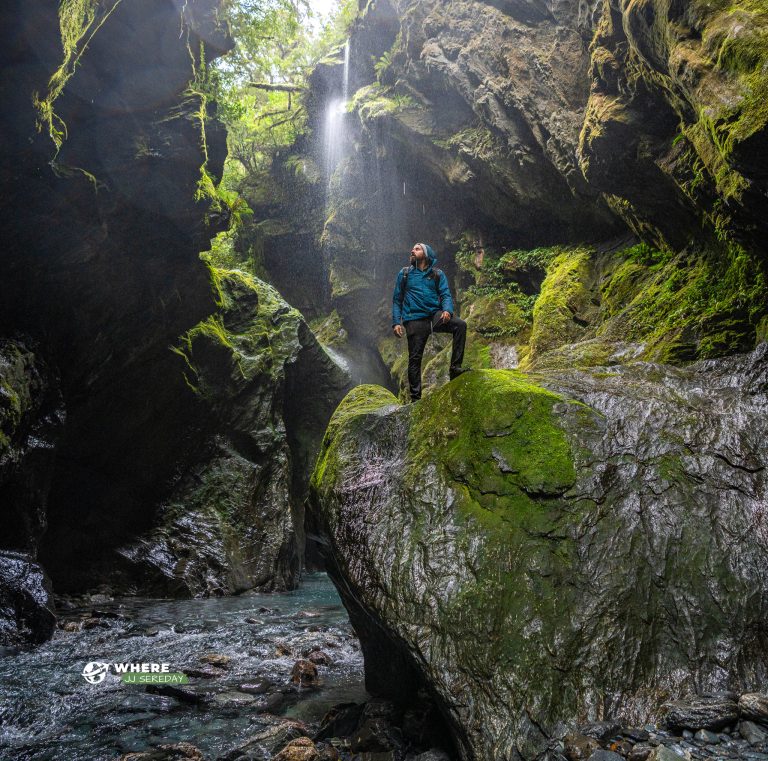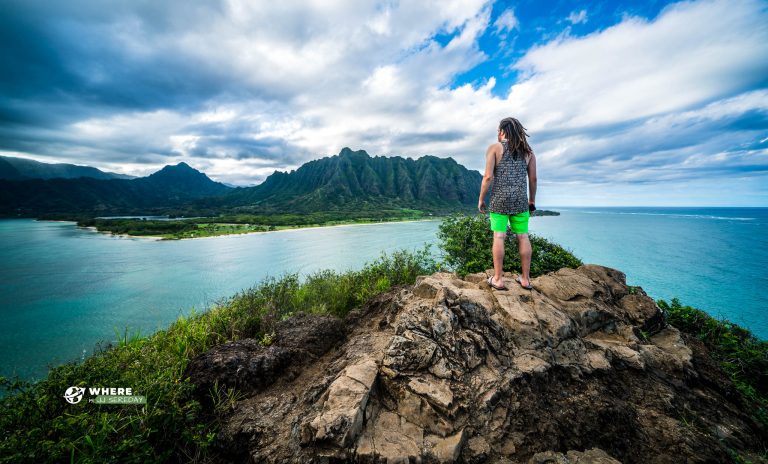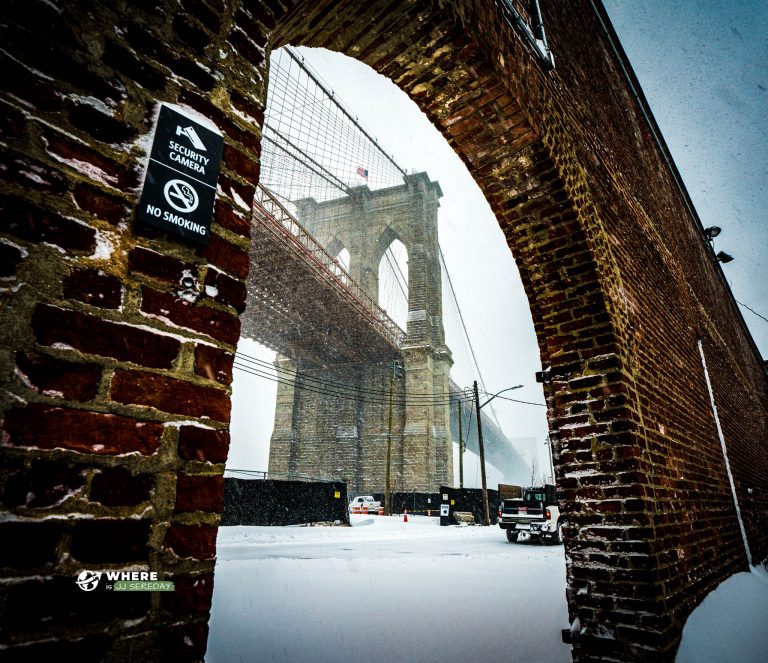Cathedral Grove, nestled within MacMillan Provincial Park on Vancouver Island, offers visitors a majestic experience among ancient Douglas firs throughout the year. However, each season brings its own distinct character to this old-growth forest, and careful timing can enhance your visit significantly.
So when is the best time to visit Cathedral Grove?
Ok let’s cut straight to the chase – my favourite time of the year to visit MacMillan Park has to be in the fall… for so many reasons.
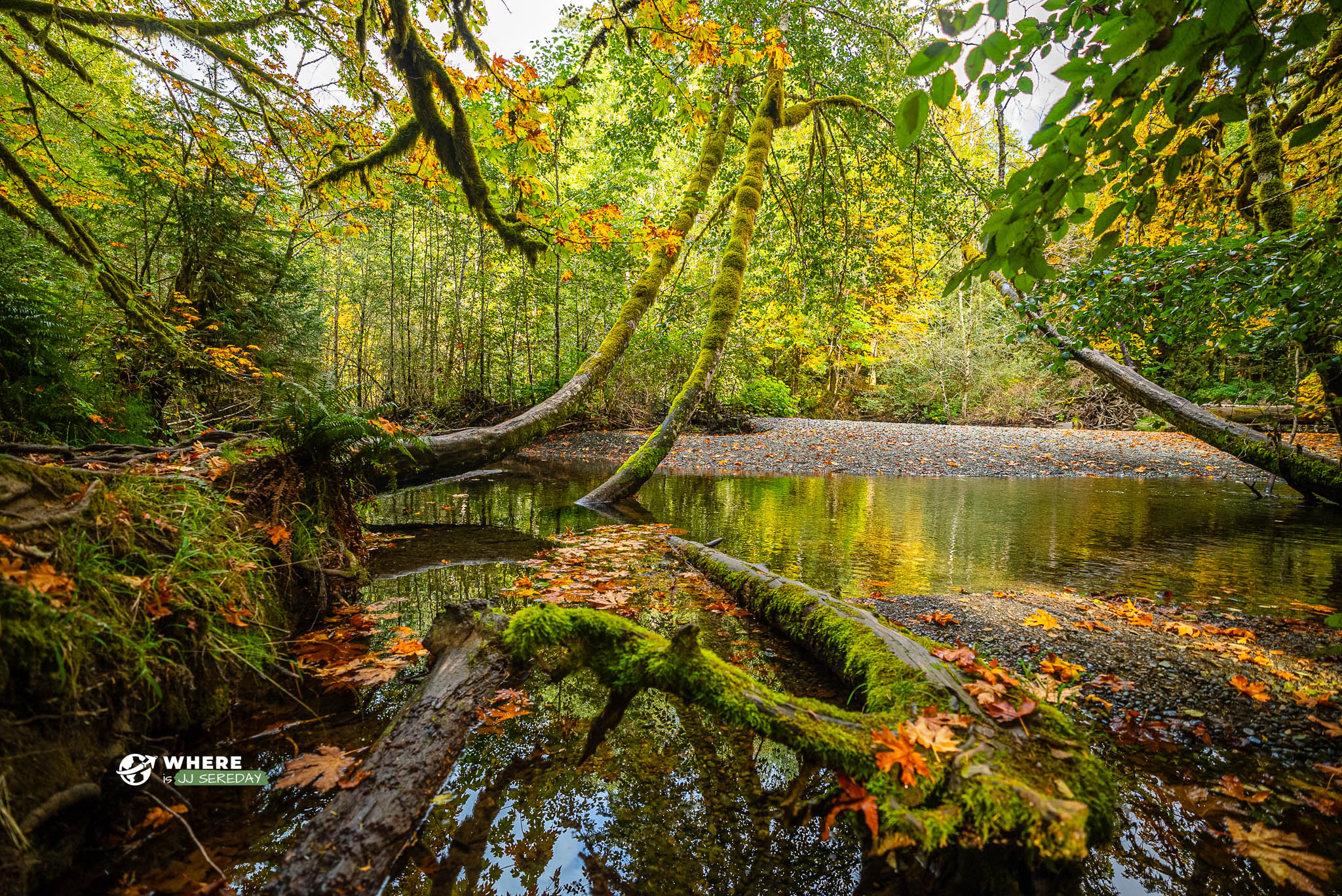
Autumn: The Ideal Season (September to November)
While Cathedral Grove is impressive year-round, autumn emerges as the optimal time to visit for several compelling reasons:
Perfect Weather Conditions
Fall typically brings stable weather patterns with mild temperatures and decreased rainfall compared to spring and winter. The comfortable temperatures make hiking and exploration more enjoyable, while the occasional morning mist adds an ethereal quality to the forest.
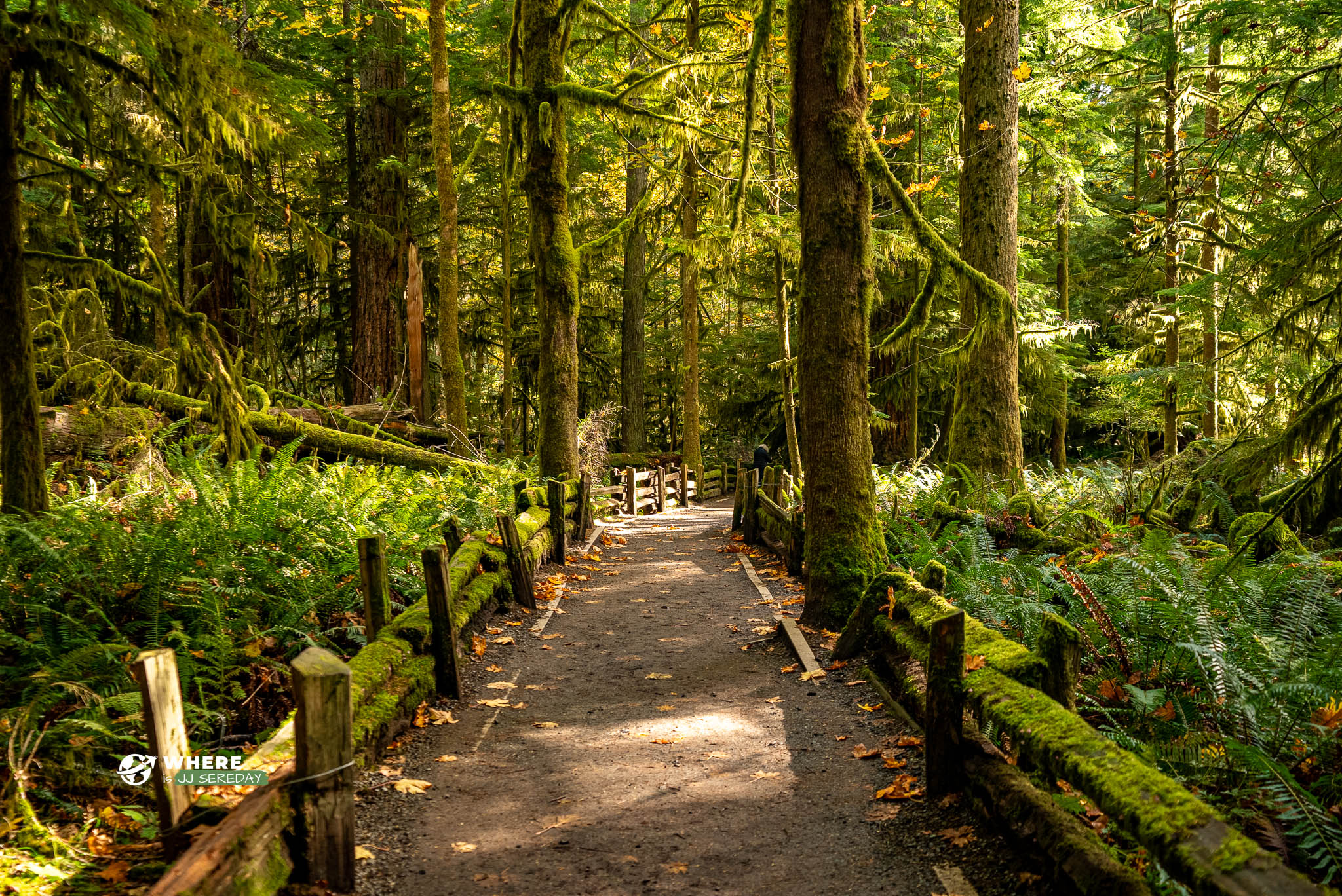
Enhanced Visual Experience
The autumn light filtering through the canopy creates spectacular effects, particularly during golden hour. While the Douglas firs remain evergreen, the scattered big-leaf maples and other deciduous trees provide splashes of gold and amber, creating stunning contrasts against the deep green backdrop.
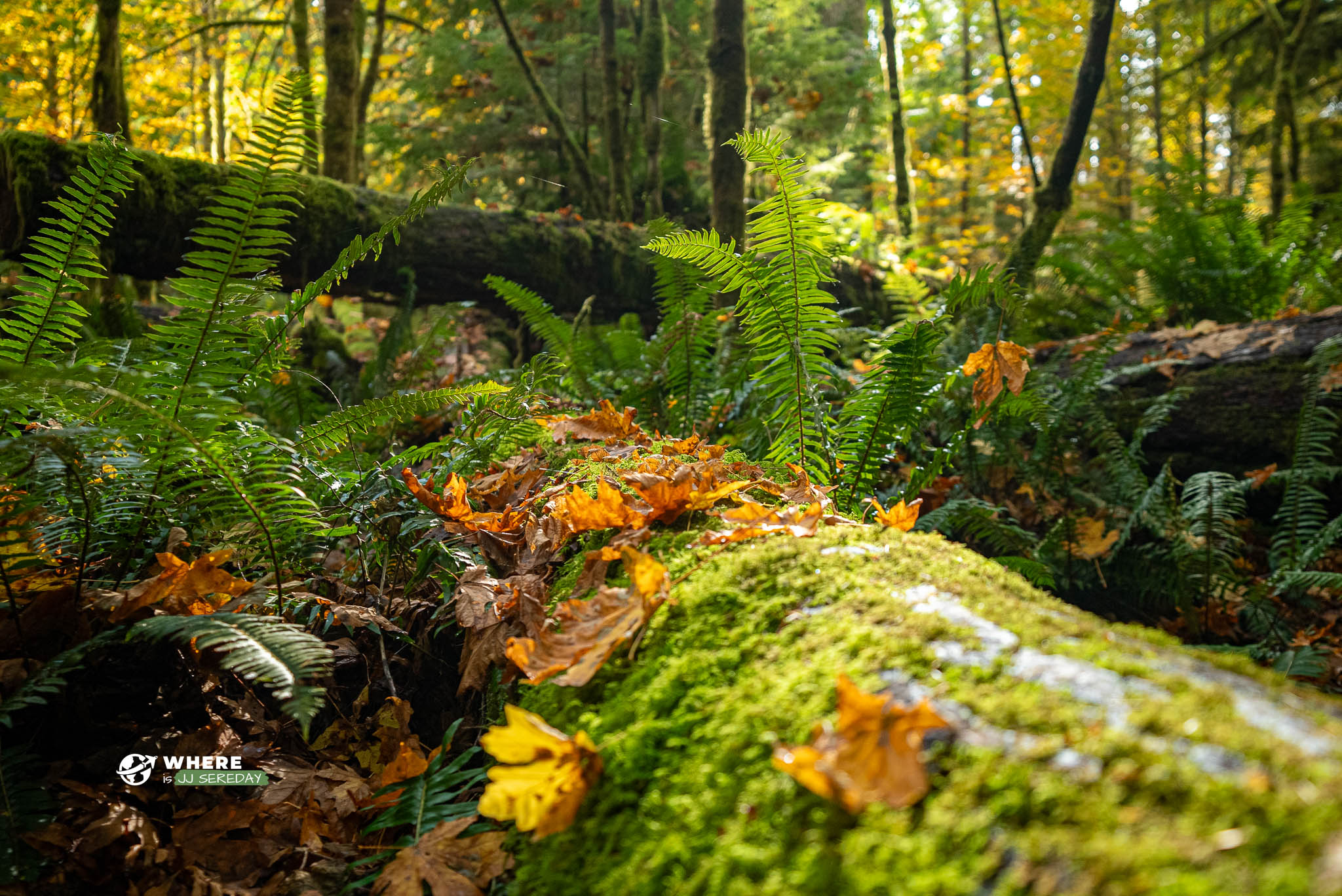
Improved Access
With summer crowds diminished, visitors can enjoy more peaceful exploration and easier parking. The reduced number of tourists allows for unhurried photography and contemplative moments among the ancient trees.
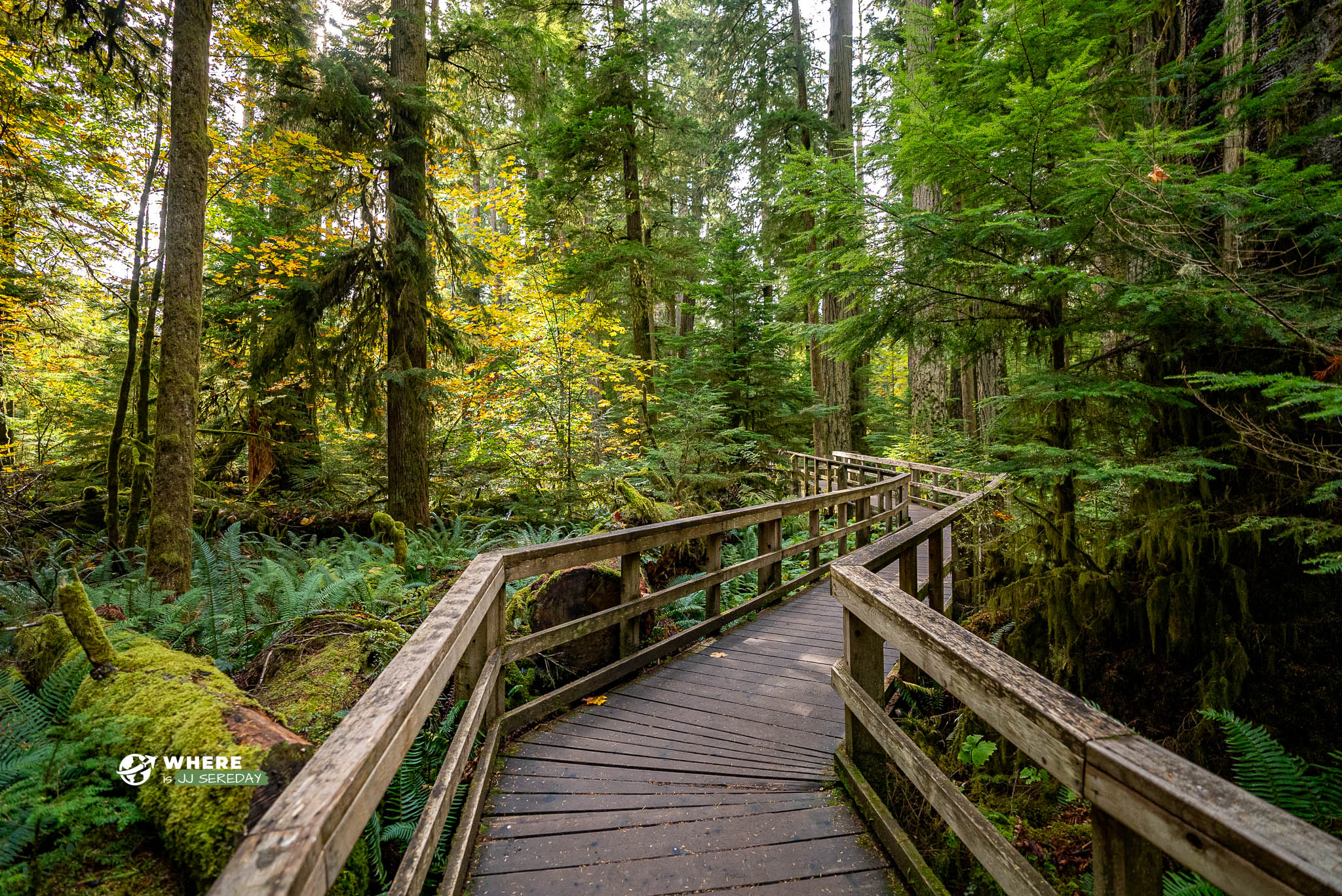
Unique Ecosystem Activity
Fall brings mushroom season to Cathedral Grove, with numerous fungi species emerging from the forest floor. This offers visitors an additional layer of discovery, with colorful mushrooms dotting the landscape and contributing to the forest’s mystical atmosphere.
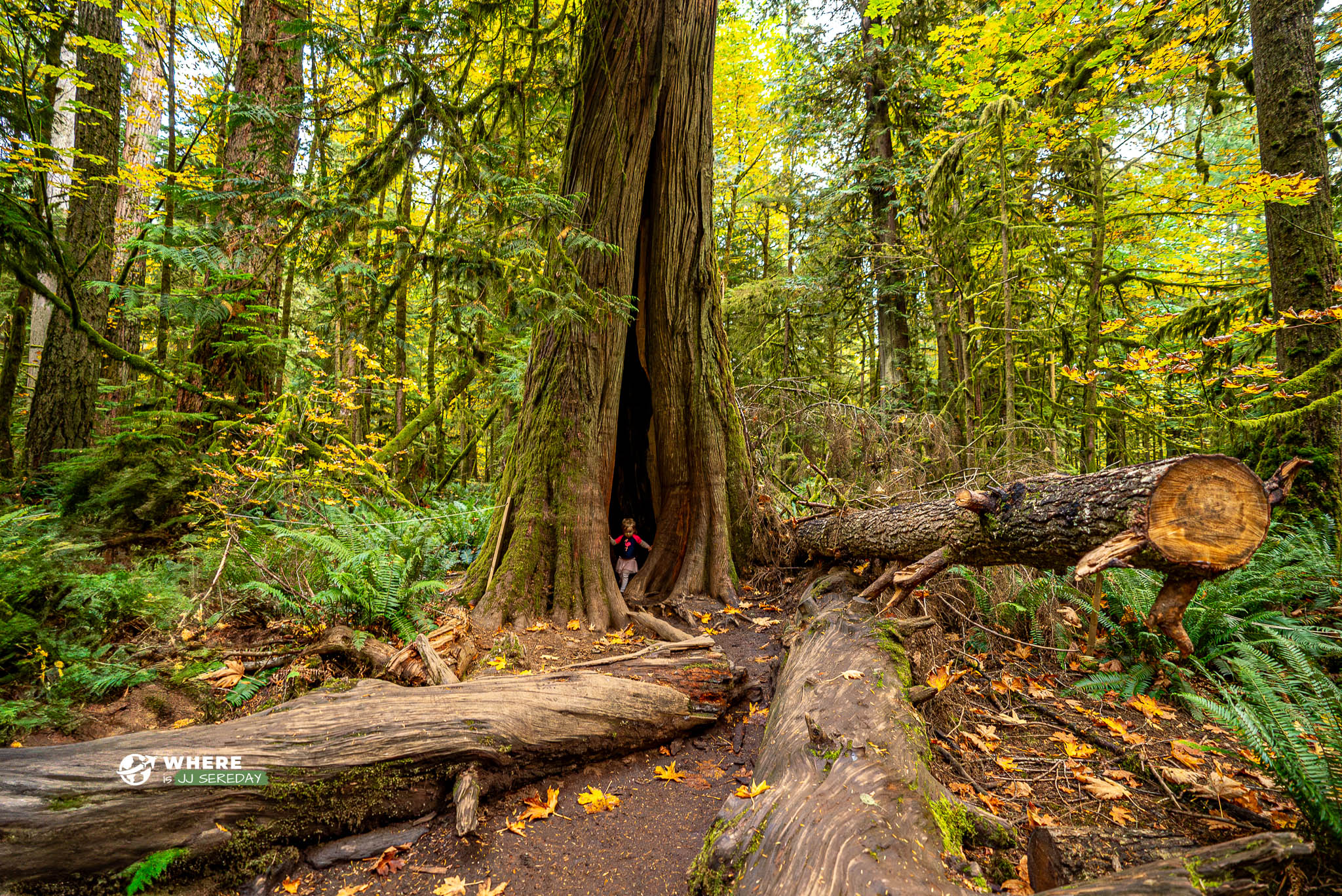
Photography Opportunities
The combination of fall colors, morning mist, and filtered light creates ideal conditions for photography. The interplay of light and shadow is particularly dramatic during autumn months, and the decreased crowd levels allow photographers to set up shots without interference.
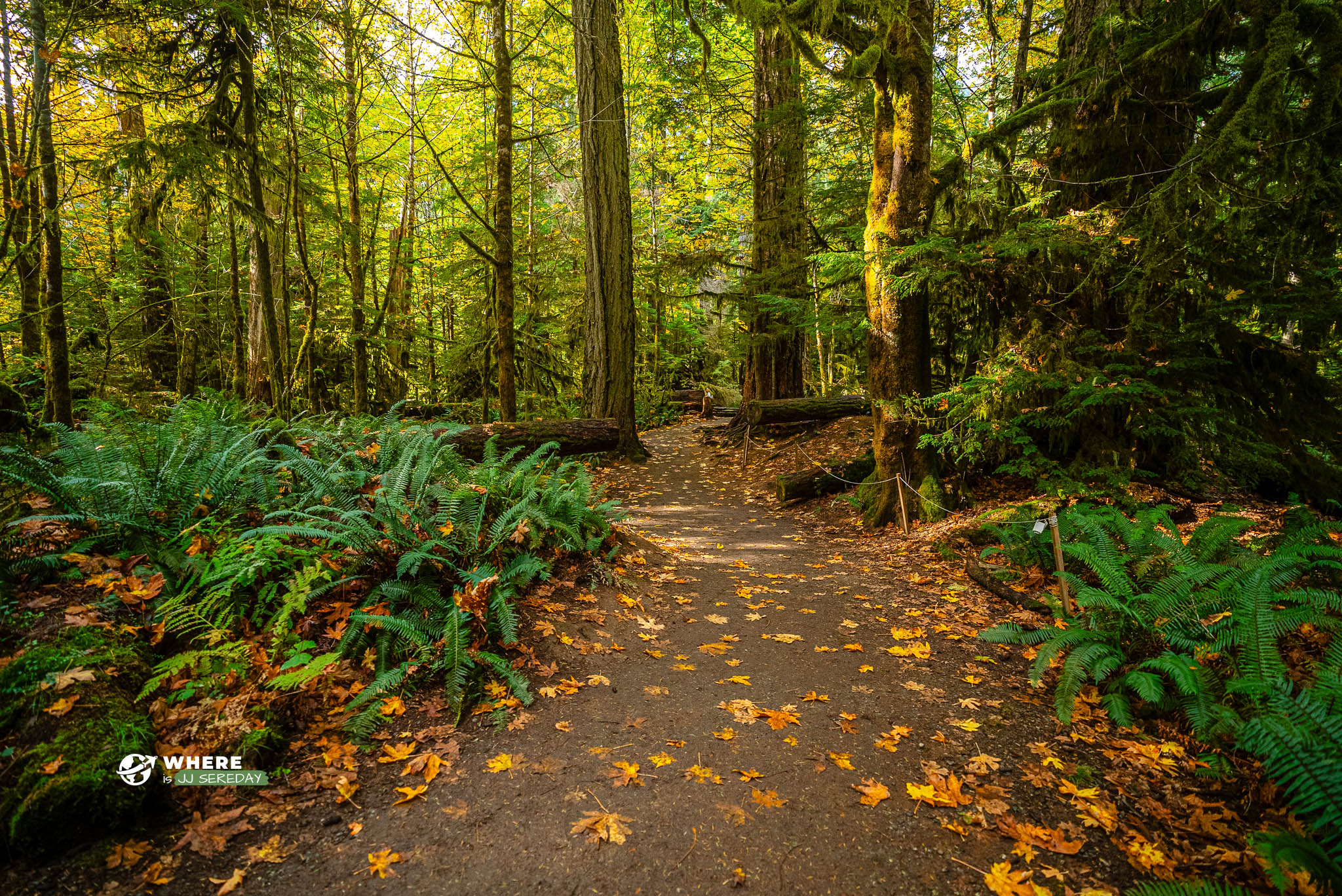
Tips for Your Autumn Visit
- Plan to arrive early morning or late afternoon for the best light and fewer visitors
- Bring appropriate rain gear, as weather can still be variable
- Wear sturdy walking shoes with good grip for potentially damp trails
- Consider visiting mid-week for an even quieter experience
- Bring a camera to capture the magical autumn atmosphere
Whether you’re a photographer, nature enthusiast, or simply seeking a peaceful forest experience, autumn in Cathedral Grove offers the perfect balance of accessibility, natural beauty, and tranquil exploration. The combination of comfortable weather, reduced crowds, and enhanced visual drama makes fall the ideal season to experience this remarkable ancient forest.
Looking to Visit a different time of year?
Well lucky for you, Cathedral Grove is amazing any time of year.
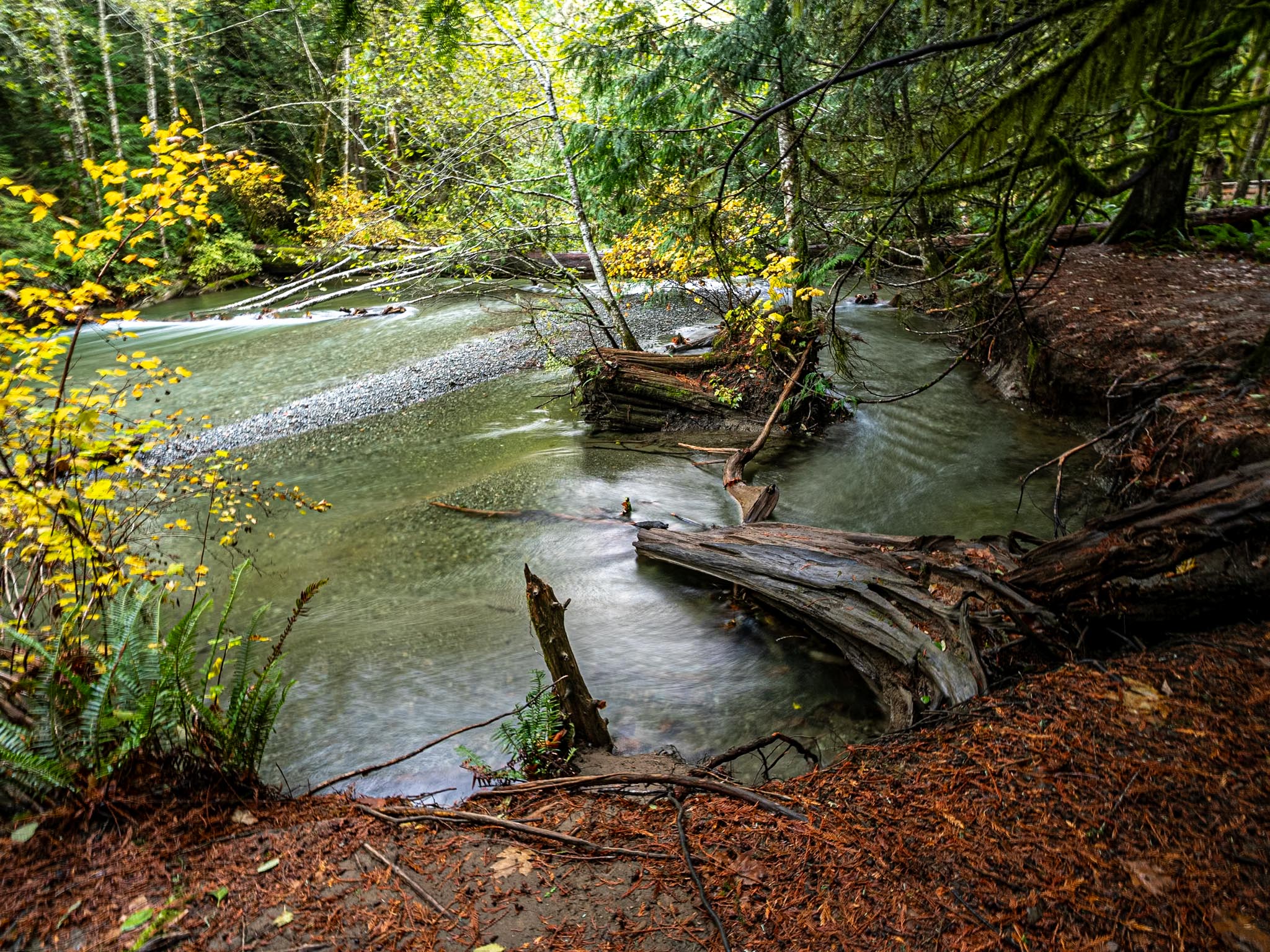
Spring (March to May)
Spring awakens the forest floor with delicate wildflowers pushing through the moss. The understory comes alive with trilliums, wild lily-of-the-valley, and fairy slipper orchids. While beautiful, spring often brings substantial rainfall, making trails muddy and photography challenging. The benefit of visiting during this season is the relatively smaller crowds and the vibrant green moss that seems to glow in the filtered sunlight.
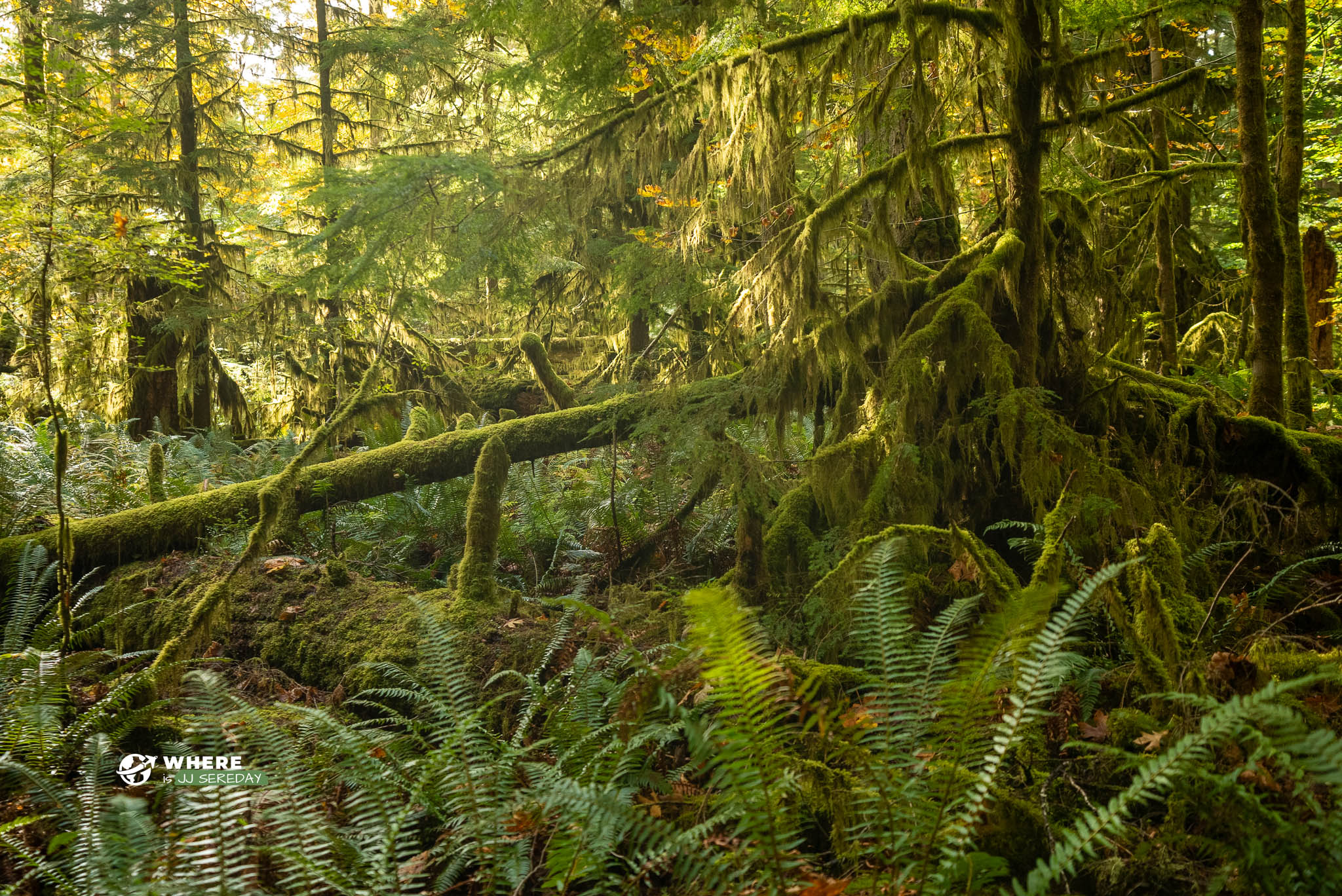
Summer (June to August)
Summer brings the highest visitor numbers to Cathedral Grove, and for good reason. The weather is most reliable, with warm, dry days perfect for exploring. The towering Douglas firs provide natural air conditioning, keeping the grove cool even on hot days. However, limited parking can be particularly challenging during peak summer months, often requiring visitors to wait for spots or visit during early morning or evening hours.
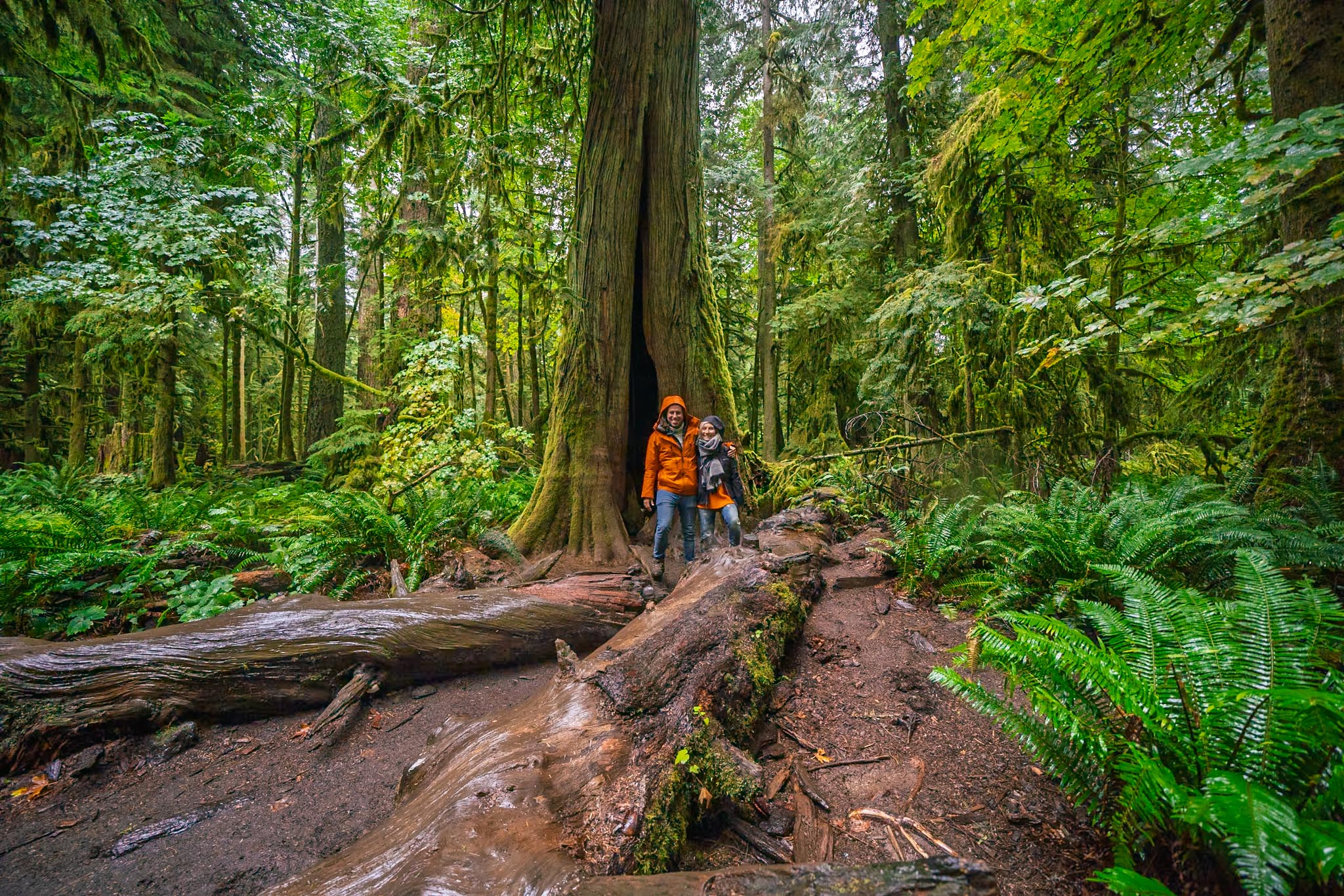
Winter (December to February)
Winter transforms Cathedral Grove into a mystical landscape, especially when the elusive snow covers the trails and massive branches of the ancient trees. (I still have yet to capture!) The forest is quietest during these months, offering solitude and unique photography opportunities. However, winter storms can make access unpredictable, and some trails may become hazardous due to ice or fallen branches.









